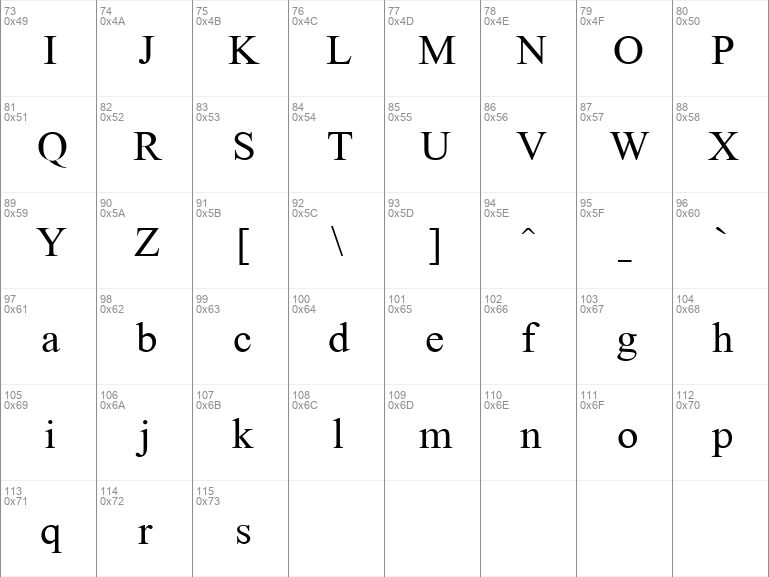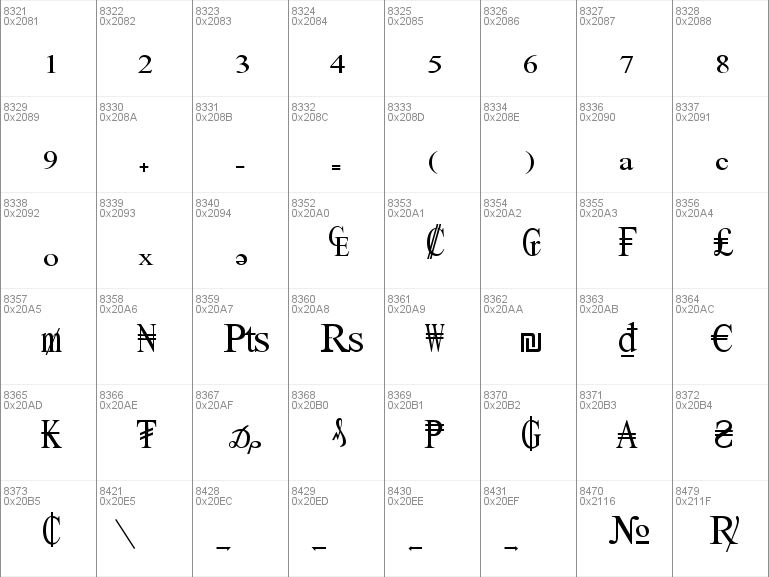My current favorite SIL font is Doulos SIL, available for download from the SIL. This font roughly matches the Times New Roman font that many people use for their word processing.
Doulos SIL is a big font, so if you use the Insert, Symbol procedure in Word to insert your symbols, you'll want to scroll down through the various character sets until you get to IPA Extensions, which has what you want. Or look below at Inserting the Symbols with your Word Processor.
Doulos SIL has only one drawback, as far as I can see: it has no italics or boldface. Depending on your word processor and printer, it can fake them to some extent, but it's still not as good as having native italic and boldface characters.
Charis SIL
Available for free download from the SIL.
Adobe illustrator student price uk used blackberry. Like Doulos SIL, this a Unicode font. Unlike Doulos SIL, it has italic and boldface, but it's not a perfect match for Times New Roman.
CharisSIL is a big font, so if you use the Insert, Symbol procedure in Word to insert your symbols, you'll want to scroll down through the various character sets until you get to IPA Extensions, which has what you want. Or look below at Inserting the Symbols with your Word Processor.
Gentiumplus
Yet another Unicode font that you can download from SIL.
The appearance of the font is unusual. I find it very beautiful, but as a result it calls attention to itself (and thus, away from the author's writing). These are matters of personal choice.
To make sure that Gentium shows up clearly on your computer screen, be sure you monitor is set properly: in Windows, Control Panel, Display, Appearance, Effects, Clear Type.
This is a big font, so if you use the Insert, Symbol procedure in Word to insert your symbols, you'll have to scroll down through the various character sets until you get to IPA Extensions, which has what you want. Or look below at Inserting the Symbols with your Word Processor.
An older font system: SIL IPA 93
SIL IPA93 is a collection of True Type phonetic fonts. These are the old-fashioned kind of font, where the symbols actually replace some of the 224 ASCII symbols that normally would depict other characters. Therefore, you have to change fonts when you're word processing. These fonts are basically obsolete; I mention them here because they are needed for FeaturePad and other teaching software I use.
If you're having trouble getting these fonts to work, go to the SILIPA93 Troubleshooting Page.
How to install a font in Windows
Windows XP:
If you downloaded your font as a .zip file, be sure to unzip it first. Current versions of Windows can do this. If you have an old version of Windows, visit here or here to get an unzipping program.
1. click Start
2. click Settings
3. click Control Panel
4. double-click Fonts
5. Go to the menus at the top of this folder and select File
6. From the pop-down menu, pick Install New Font
7. Navigate through the folders by clicking, to wherever you put the font(s) you downloaded. If you don't where this is, download again, and keep track of where you put it.
8. Once you've found your fonts, click on Select All, then OK.
9. Now when you use Word or other software, and select a font, the font(s) you just installed should be available.
Windows Vista: A reader of this web page kindly sent me this information:
'I installed the Doulos Font on Vista and it works with a tiny difference in installing. Vista does not offer you the option of installing a new font from a drop down menu. However, you can directly copy or drag the unzipped file into the fonts folder and it works just fine.'
How to install a font in a Mac
A reader of this web page has kindly volunteered the following instructions:
In Mac OS X, fonts are in the Fonts folder, in the Library folder on your Mac OS X disk. These fonts are available to all of the computer's users.
You can also put fonts for your personal use in your home folder. Click the home icon in the far-left column of a Finder window to see your home folder. Then click Library to see the Fonts folder.
The easiest way to install and manage fonts is by using Font Book. Font Book is located in your Applications folder. For more information about using Font Book, see Font Book Help, available in the Help menu when Font Book is open.
In Font Book, click on File/Add Fonts, navigate to the location of your downloaded fonts, select them, and click OK.
Then, close Font Book, re-open whatever word processing document you're working with (Word for Mac, for example), and the fonts should show up.
Within Word for Mac, click on Insert/Symbol to insert a font. This is also where you can set up keyboard shortcuts.
Inserting the Symbols with your Word Processor
I only know about Word; if you know others you might let me know.
Installing your own keyboard shortcuts
This method requires you to develop a system bit by bit, but eventually you can get a system in which you can type phonetics pretty fast.
The first time you need a symbol, go to the menus at the top of the screen and find Insert, then Symbol, then find your phonetic font, then find your symbol. Click on the symbol to highlight it. Then click on the Shortcut Key button. Choose your shortcut key.
In choosing shortcut keys, I like to use a two-keystroke mnemonic system. Thus, for the IPA 'snake' symbol that represents the sound of the letter sequence 'sh', I use Ctr Alt Shift s, h. Similarly, the a-e digraph for the vowel of 'cat' is Ctr Alt Shift a, e. But you can also use simpler keystrokes for the most common symbols, so for instance I use Ctr e for schwa (note: this sacrifices whatever Ctr e does in Word, so make sure you aren't discarding something you really want).
Once you picked your shortcut key combination, click Close, twice. Now, when you type the shortcut sequence, the symbol will pop onto the screen. Gradually, you can develop a full set of shortcut keys in this way.
Doulos Pronounce
One more thing: when you set up shortcut keys, the next time you exit Word, you'll be asked if you want to save 'normal.dot'. The answer is 'yes'; normal.dot contains the information about your shortcut keys.
If you set up all your symbols this way, eventually, you'll remember all the codes and be able to word-process phonetic symbols fairly fluently.
Using a document template
Lightroom 5 mac download crack. Make sure you have Doulos SIL on your computer (see above).
Open this file: BHTemplateForPhoneticSymbolEntry.dot. Open it in Word, then edit your document and save it under another name (with the appropriate suffix, doc not dot). Then open this file: GuideToBHTemplateForSymbolEntry.doc, and print it out. The second file gives you keyboard strokes that will produce symbols in Doulos SIL in the first document.
Macs
A correspondent writes:
'In Mac, within System Preferences, open International, go to Input Method, and select Character Palette and Keyboard Viewer.

Then in Mac Word, for example, at the top right of any given document, there will be an international symbol, possibly the American flag, and if you click on it, Character Palette opens, and in the left-hand pane, you can select 'phonetic symbols,' and voila! there they all are! highlight what you want and click Insert.
A nice feature to Character Palette is that, with regards to ligatures in diphthongs, you can select, for example, a 'schwa', insert it, and then the ligature, insert it, and then a 'horseshoe' and insert it, and the program automatically links them together. it's great.'
Last updated February 26, 2012
DOWNLOAD CURRENT VERSIONDoulos SIL 5.000 for Windows
EXE | 1.22 MB | 28 Oct 2014
Announcement List
If you would like stay informed of updates to Doulos SIL and other SIL fonts, please subscribe to the SIL Font News Announcements List.
Current Version
Doulos SIL 5.000
Windows Installer
Windows Installer
Doulos SIL 5.000
Mac OS, Linux, Windows
Mac OS, Linux, Windows
Doulos SIL 5.000 web
Main package plus WOFF webfonts and sample files
Main package plus WOFF webfonts and sample files
Doulos SIL 5.000 developer
Web package plus source files
Web package plus source files

Doulos SIL Compact 5.000 compact
Mac OS, Linux, Windows
Mac OS, Linux, Windows
One font is included in the above downloads:
- Doulos SIL Regular
This font is also available in the SIL software repository for Ubuntu. Users can subscribe to this software repository and get current versions and updates automatically. Currently the Ubuntu version is 5.000.
Doulos SIL is also available through the TypeTuner Web service, which allows you to choose your selection of smart font features and download a font with those features preset. This enables them to work in many applications that do not make use of Graphite or OpenType Stylistic Sets.
See Release Notes for a list of the changes made to this version of the font.
See Doulos SIL FAQ for answers to questions you may have.
Sil Doulos Ipa 93
Font Subsets
SIL’s Non-Roman Script Initiative has created very comprehensive fonts for Latin and Cyrillic character sets. Doulos SIL is a very large font that covers just about every need we know about in the Latin and Cyrillic world. Now, in the age of mobile devices and web usage, there is a need for fonts that are small and compact.
We have provided subsets for Africa, Americas, Asia/Pacific, Europe/Eurasia, Vietnam, Phonetic, Cyrillic (Basic) and Cyrillic Extended. With the exception of the Phonetic font, the font subsets are intended for orthographic use only. We have not put anything in the other subsets for phonetic, transliteration, or transcription use. For those purposes, use the Phonetic subset.
For more information and downloads see: SIL Font Subsets.
Modified Fonts for Special Uses
In addition to the font subsets described above, some modified Doulos SIL fonts are available for a specific region or purpose:
- Africa (Mali)
- Americas
- Eurasia
- Literacy and Literacy Compact
Previous Versions
Download for Previous Versions
